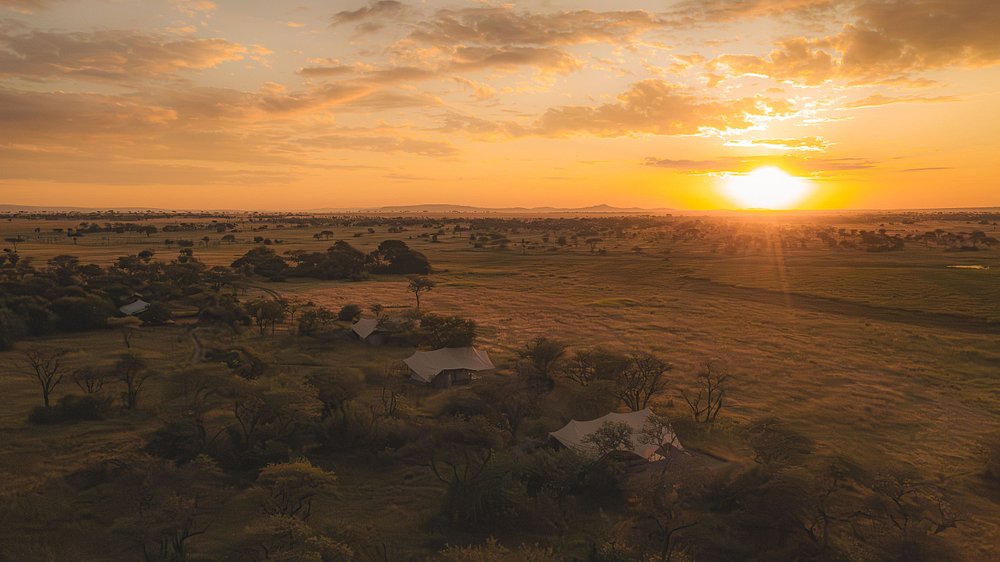Back to stories
TanzaniaWildlifeUNESCO
Ngorongoro Crater: Africa's Garden of Eden
Everything you need to know about visiting Tanzania's most famous wildlife destination, from logistics to what animals you'll see.
Agnes MwangiAugust 18, 2025

"The Ngorongoro Crater is often called Africa's Garden of Eden, and for good reason. This UNESCO World Heritage site contains the world's largest intact volcanic caldera."
The Ngorongoro Crater formed 2-3 million years ago when a massive volcano collapsed, creating a natural amphitheater 610 meters deep and 260 square kilometers in area. Today it shelters one of Africa's densest concentrations of wildlife.
Getting There requires flying into Kilimanjaro International Airport or Arusha Airport, then driving 180 kilometers to the crater rim. The journey takes 3-4 hours through rural Tanzania, passing Maasai villages and spectacular landscapes.
Entry Requirements include conservation area fees paid at the gate. Vehicle entry fees apply separately, and you must use a registered tour operator with a certified guide. Crater floor access is limited to 6 hours to minimize environmental impact.
Wildlife Viewing is exceptional year-round. The crater floor hosts around 25,000 large mammals including lions, elephants, buffalo, hippos, and the rare black rhinoceros. Flamingos flock to Lake Magadi in the crater center when conditions are right.
The Big Five are all present, making Ngorongoro one of the best places in Africa to see them in a single game drive. Lions are particularly numerous with several prides resident on the crater floor. Black rhinos, though critically endangered elsewhere, maintain a small but stable population here.
Seasonal Variations affect your experience. The dry season from June to October offers easier wildlife spotting as animals concentrate around water sources. The wet season from November to May brings lush landscapes and newborn animals, but some roads may be challenging.
Accommodation Options range from luxury lodges on the crater rim to budget campsites. Rim lodges offer spectacular sunrise and sunset views but book well in advance. Staying on the rim means early morning game drives as you descend before other visitors arrive.
Cultural Encounters with the Maasai people add depth to your visit. Several cultural centers around the crater offer authentic experiences including traditional dances, craft demonstrations, and visits to real Maasai homesteads.
Photography Tips for the crater include bringing a telephoto lens for wildlife shots and wide-angle for landscapes. The crater walls create dramatic backdrops, especially during golden hour. Dust can be an issue during dry season, so protect your camera gear.
Conservation Efforts in Ngorongoro balance wildlife protection with Maasai pastoral traditions. The area operates as a multiple land use conservation area where people and wildlife coexist, though this creates ongoing management challenges.
Planning Your Visit should include at least two days to properly experience the crater and surrounding conservation area. Combine with northern Serengeti for the ultimate Tanzania safari, or add Tarangire National Park for diverse landscapes and elephant herds.
Best Time to Visit depends on your priorities. Dry season offers easier travel and concentrated wildlife viewing. Wet season provides dramatic skies, fewer tourists, and lower accommodation rates, though some areas may be inaccessible.
The crater truly lives up to its reputation as one of Africa's most spectacular wildlife destinations, offering guaranteed Big Five viewing in a setting of breathtaking natural beauty.
Love this story?
Share it with fellow adventurers
Ready to create your own
safari story?
Let our expert guides transform these inspiring tales into your personal adventure. Every journey begins with a conversation.
✓ Expert local guides✓ Tailored itineraries✓ 24/7 support